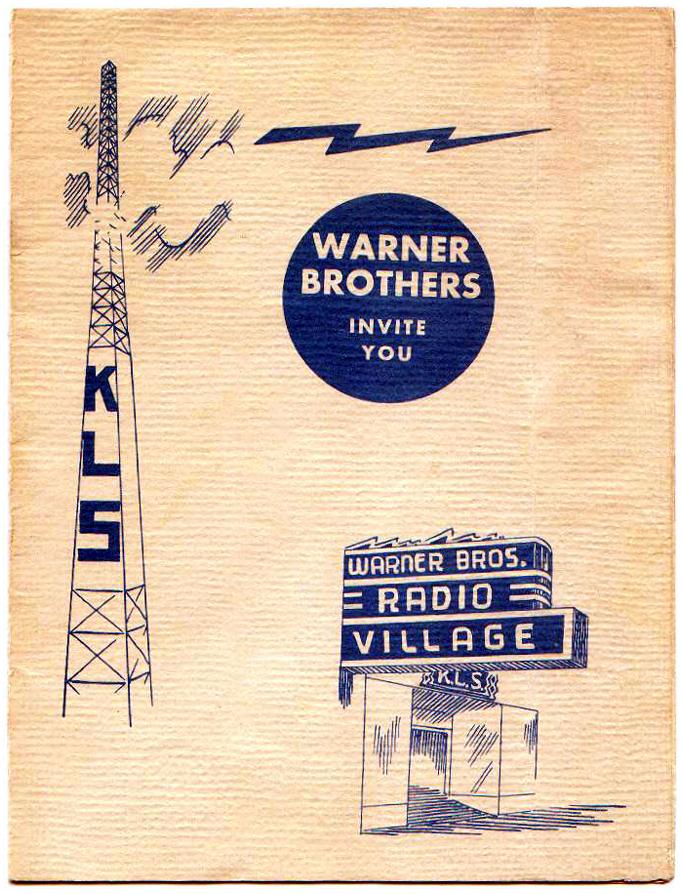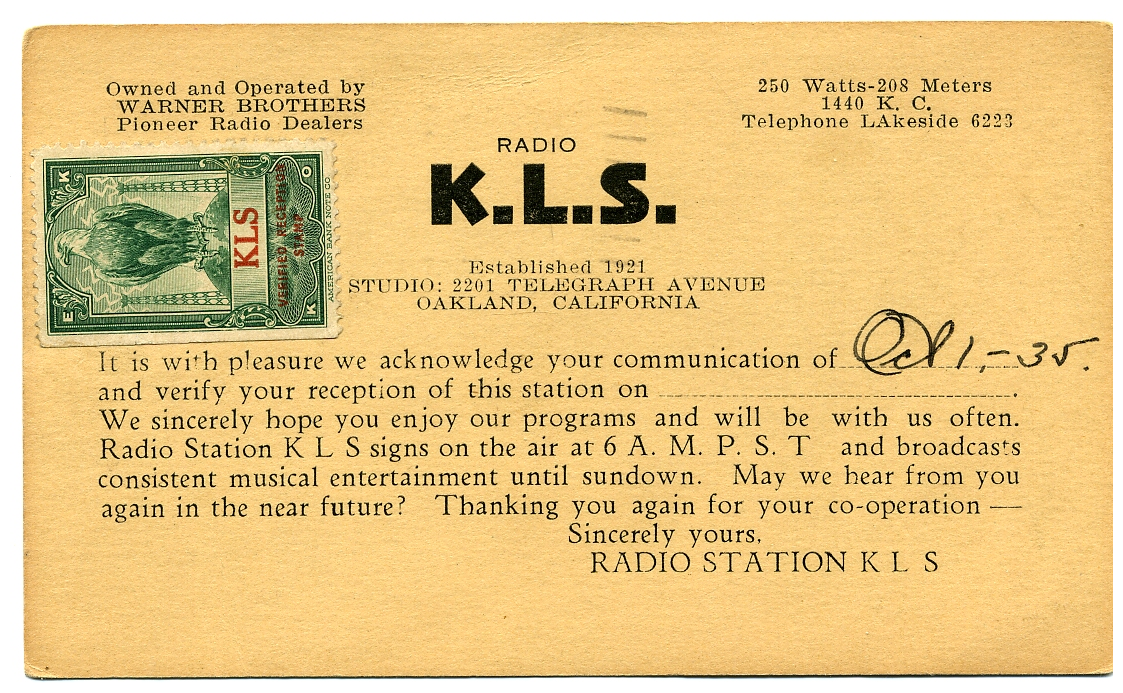

The Early History Of
KLS/KWBR/KDIA
Oakland, California
By John F. Schneider
One of the earliest Bay Area radio operations that has been in continuous operation until the present time was KLS, the Warner Brothers’ station. This station did not belong to the Warner Brothers of motion picture fame, but rather to the brothers Stafford W. and Eugene N. Warner.
The Warners were amateur radio operators who ran a small grocery store at 22nd and Telegraph in Oakland. They originally sold radio parts in one corner of the store, but the interest in radio sales grew until they finally discontinued grocery sales completely and turned their store into a wireless shop about 1918. They operated their amateur station 6XAM from the shop, and it eventually evolved into a broadcast station.
In 1921, the Warners were airing regular programs consisting of phonograph records and occasional piano music. On March 6, 1922, 6XAM was licensed as KLS, and the little station continued to broadcast through the twenties, mostly with programs of recorded music. Its sole function was to serve as a publicity agent for the Warners’ Oakland radio shop, as well as their two later San Francisco stores. Its most prominent early program was the “Radio Church of America.”
At first sharing 360 meters with all stations in the area, KLS was assigned to 1440 kc. in 1923, and transmitted with 250 watts. In 1928, KLS moved to 1280 kc., where it was required to share time on the frequency with KTAB until the mid-thirties. When KTAB became KSFO and moved to the 560 dial position, KLS adopted the 1280 frequency full time. (In 1941, in a massive nationwide frequency reallocation, the station moved to its final assignment of 1310 kc.)

In March 1937, the studios were moved to 21st Street (now 22nd Street) on what is now Kaiser property in Oakland. The Warners leased the entire second floor of a building there, and started what they called “Warner Brothers Radio Village.” Several shops were constructed next to the studios in the form of an indoor shopping mall, and it was hoped that the presence of the radio studio would draw people to the shops. The plan was only moderately successful, however. A tower was built on the roof of the building, and the station’s power was increased from 250 to 1,000 watts.
Programs on KLS were mostly ethnic or religious. Some regular programs were “The Voice of Portugal,” “Mi Rancho,” the “Daily Litalia” program, and Rev. Charles Lukens’ “Valley Church of the Air.” The station’s music was also segmented, with popular music played mornings, rhythm and blues in the afternoons, foreign music evenings and jazz overnight. The all-night program, called “The Cigar Box Review,” was so named because it was sponsored by several 24-hour cigar stands.
KLS changed its call letters to KWBR on September 10, 1945, and continued to be operated by the Warner Brothers until June 1959. At that time, the station was sold to Egmont Sonderling. The call letters were changed to KDIA, after Sonderling’s successful Memphis station, WDIA, and it began programming for a black audience, featuring black disk jockeys and Rhythm and Blues music (later to be called “Soul” music). KDIA found a competitor for a while in KSAN, which changed its call letters to KSOL in 1964, and was programmed for the black audience until 1971.
Related Exhibits
References
Interview between author and Eugene Warner, former owner of KLS. Oakland, California, September 22, 1970.
Interview between author and Bill Doubleday, manager of KDIA. Oakland, California, May 7, 1970.
The Federal Radio Commission Station List, as authorized on November 11, 1928, with research by Barry Mishkind, 1993-94.

Eugene and Stafford Warner were my Grandma’s brothers.